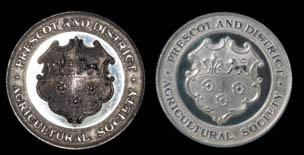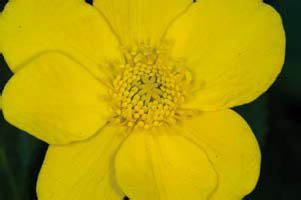articles/Lens/gettingclose-page2
Getting close with SIGMA - part 2 of 1 2 3 4 5
by Mike McNamee Published

There is a considerable difference in the rendering of objects such as medals. On the left the EM-140, on the right the DeVere dome.
A rotating collar is provided, a boon if you have to tripod mount as the balance of the combination camera/lens is superb. The lens-camera set-up is quite heavy which is not unexpected for such a focal length and aperture. The engineering of the lens is up to the usual high standard we expect from this maker.
There is a focus limiter, which can be set to one of three ranges . full, 0.52m.‡, and 0.38m.0.52m. In practice this worked reasonably well, there is nothing more infuriating than watching an insect take off while your auto focus goes hunting out to infinity and back! We did find that we were often on the wrong range setting, but the limiter switch is well positioned for easy changing, without even moving your eyes from the viewfinder. As with all macro work there are arguments for and against the use of autofocus, especially at very close working distances, when the natural rhythmical movements of the human body are greater than the depth of field. We settled on a mixture of both manual and auto focus. The Sigma/Nikon D200 combination certainly snapped into focus very cleanly, the problem was either the breeze moving the subject or the photographer swaying around! The Nikon auto focus is very sophisticated and the user is able to cause the shutter to hold off firing unless there is a positive gin-focush signal. This worked quite well, see the separate report on the D200.

Although the illumination is very even from the EM-140 it casts double shadows around the rim of the flowers petals and the stamens. This can be changed to a more modelled light by altering the relative strengths of each tube as shown in the image of the wasp at the nest in the bottom lef
In the Studio
In order to gauge the performance of the lens we worked initially under well-controlled studio conditions from a heavy tripod using cable release or self-timer release, and spirit levelled alignment. We used our normal subject, the innards of a chronograph. This was shot at 1:3 using f11. For comparison we shot with the Nikon D100 and D200. While the shots reveal first-class detail, the advantages of the D200 over the D100 are easily evident in the original files. The performance of the Sigma was essentially flawless and in the field it was way ahead of all the other problems such as camera shake and subject movement - this is a lens you could trust to do any job.
Please Note:
There is more than one page for this Article.
You are currently on page 2
- Getting close with SIGMA page 1
- Getting close with SIGMA page 2
- Getting close with SIGMA page 3
- Getting close with SIGMA page 4
- Getting close with SIGMA page 5
1st Published
last update 09/12/2022 14:54:40
More Lens Articles
There are 0 days to get ready for The Society of Photographers Convention and Trade Show at The Novotel London West, Hammersmith ...
which starts on Wednesday 15th January 2025




